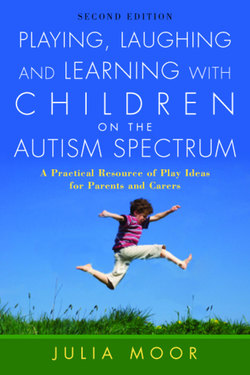Читать книгу Playing, Laughing and Learning with Children on the Autism Spectrum - Julia Moor - Страница 23
На сайте Литреса книга снята с продажи.
Structuring early learning
ОглавлениеNon-autistic children have a curiosity and motivation to understand as much of the world around them as possible. Their developing brains cope with new concepts and levels of understanding as soon as they are physically ready. Their ability to think and reason is aided by a stimulating and attentive environment as well as their own biological make-up.
If, however, that very biological make-up is impaired in a way that takes away the motivation to understand and make sense of the child’s surrounding world (the way an autism spectrum disorder does) then the process of learning is disabled, regardless of whether the child’s intellectual reasoning is intact.
This makes the prospect of creating an environment to support learning much more of a challenge. Most parents of children with autism are in agreement that their child needs to have proactive input into helping him learn and play and communicate as early as possible. Even though these three elements of development are very much entwined, we might see them also as separate arenas that need equal attention. From the outside, activities aimed at developing play skills may also look like activities to aid learning and communication and vice versa. For parents, however, it may help to allocate structured time to the three different activities, even though the activities eventually support each other. Activities specifically designed to aid communication (speech and language therapy) should be provided at your child’s individual level of ability. Make the most of your speech and language therapist for this. Structured learning can be done as a daily session at home, taking the form of a slightly more formal version of the structured play activities. Try creating a ‘workbox’ that is brought out every day, preferably at the same time of day. Keep it out of your child’s reach and rotate and change the materials often to keep his interest. To start with, keep the session very short with two or three two-minute activities, and gradually try to build up the time to a longer session. Use activities that can be done at a table top – you might like to sit opposite your child so that he can see your face, but if this is too intrusive for him at first, sit at his side.
For ideas of what items to put in your workbox and how to introduce them, see Chapter 6 (‘Table-Top Games and Puzzles’). Mix these with exercises provided by your speech and language therapist, and some pen control exercises (see Chapter 13, ‘Being Creative: Art and Craft’).
